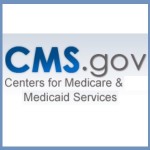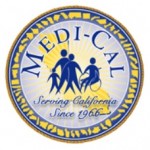
Centers for Medicare & Medicaid Services
People who turn 65 and may have been receiving a hefty subsidy through Covered California to reduce their health insurance premium can be shocked at the costs of enrolling in Medicare. However, there are a variety of resources to assist Medicare beneficiaries to lower their health insurance and health care costs. Assistance from both Social Security and Medi-Cal may be an option for some Medicare beneficiaries depending on their household income.
Extra Help with Medi-Cal for Medicare beneficiaries

California Medi-Cal
When a person turns 65, or is determined disabled, and becomes eligible for Medicare health insurance, both their monthly premiums and out-of-pocket costs for health care services can be greater than either their previous employer plan or their Covered California health insurance. While there is no premium for Medicare’s Part A in-patient hospital insurance, individuals in Original Medicare are subject to a $1,288 deductible (2016) that can reoccur several times per year. The Part B out-patient coverage premium could be as high as $121.80 per month with a $166 deductible before the 20% coinsurance starts for health care services [https://www.calhealthnews.com/medicare-2016-part-b-premium-and-deductible-to-increase/]
While Medicare Advantage plans (MA-PD) can have very affordable monthly premiums (or in some cases $0 monthly rates), members of these plans are still subject to cost-sharing copayments for hospitalization, office visits, and other out-patient services. A Medicare Supplement plan may cover all of deductibles and cost-sharing of Original Medicare, but the monthly premiums can easily be over $150 per month.
Fortunately, there are a variety of programs to help reduce or eliminate many costs associated with Medicare. All of the extra help pivots on the household income. The gatekeeper of determining household income is the Social Security Administration (SSA). The SSA is also the first stop to see if a Medicare beneficiary is eligible for the Low Income Subsidy (LIS) to help pay for the Part D Prescription drug plan. People enrolled in Original Medicare don’t have to go through Medi-Cal (Medicaid) to be determined eligible for the LIS. The SSA LIS, Extra Help, can pay for the costs of monthly premiums, annual deductibles and prescription co-payments related to a Medicare prescription drug plan.
In general, eligibility for the LIS from the SSA is based on a household income of less than 150% of the federal poverty level and limited assets. For 2016 the income limit is $17,820 for an individual or $24,030 for a married couple. The asset limitation is $13,640 for an individual or $27,250 for a married couple. The asset test does not include the value of a home, car, or life insurance policy. There are allowances for the support a Medicare beneficiary may be providing to other family members in the household.
Many Medicare beneficiaries may also qualify for extra help through California’s version of Medicaid known as Medi-Cal. The level of assistance is based on the household income. People who are eligible for both Medicare and Medi-Cal are known as Dual Eligibles. There are several different levels of Medi-Cal assistance based on income.
- Qualified Medicare Beneficiary (QMB) Program – Helps pay for Part A and/or Part B premiums, deductibles, coinsurance, and copayments
- QMB Plus includes Full Medicaid benefits
- Specified Low-Income Medicare Beneficiary (SLMB) Program – Helps pay for Part B premiums
- SLMB Plus includes Full Medicaid benefits
- Qualifying Individual (QI) Program – Helps pay for Part B premiums
- Full Benefits Dual Eligible includes Medicare Part B premium and Full Medicaid benefits.
Qualified Disabled Working Individual (QDWI) Program – Pays the Part A premium for certain people who have disabilities and are working.
Income levels based on the Federal Poverty Level (FPL)
- Qualified Medicare Beneficiary is 100% of the FPL
- Specified Low-Income Medicare Beneficiary is 120% of the FPL
- Qualified Individual is 135% of the FPL
- Qualified Disabled Working Individual is 200% of the FPL
See 2016 Medicare – Medicaid Dual Eligible Income Levels for actual dollar amounts.
Medicare_Beneficiaries_Dual_Eligibles_At_a_Glance.pdf
To determine if a person is eligible for Medi-Cal assistance contact the local county Medi-Cal office for an eligibility application. There may be limitations to Medi-Cal paying some providers for health care services. Generally, Medi-Cal will only pay for services furnished by Medi-Cal providers. Some counties have special Medicare Advantage plans with Medi-Cal coverage built into them. Dual Eligibles get a little extra flexibility in switching health plans. Once a Medicare beneficiary becomes eligible for Medi-Cal they can switch to a different Medicare Advantage plan that may be better suited to working with Medi-Cal benefits. The individual may also be eligible for a Special Needs Plan or Chronic Condition Medicare Advantage plan subject to availability in their county.

